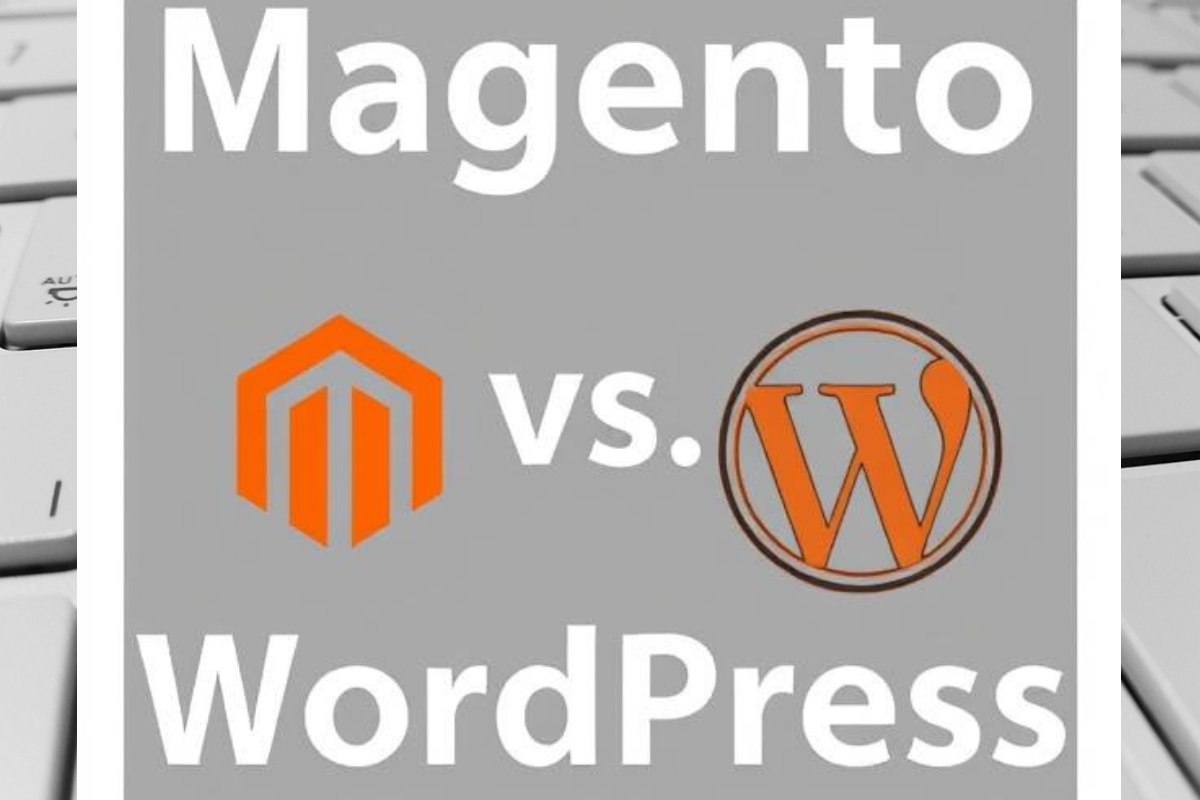

Magento vs WordPress: Which Platform Will Rule Your 2025 Store?
Magento vs. WordPress: Who Wins the eCommerce Showdown?
When it comes to launching an online store, two giants always pop up—Magento and WordPress (the hero behind WooCommerce). The burning question is: “Which platform is better?” The truth? Neither claims the crown; it’s all about which tool fits your project’s DNA.
WordPress + WooCommerce: The Smoothie of Simplicity
Pros
- Getting Started is a Breeze. Just install WordPress, drop in WooCommerce, and you’re almost set.
- Huge Community & Themes—over 50,000 free themes plus a marketplace of paid ones.
- Cost‑Effective—free core plugin, with premium extensions costing a fraction of Magento’s MSRP.
- SEO Friendly out of the box thanks to WordPress’s inherent structure.
Cons
- Scalability Limits. Handles up to a few thousand SKUs effortlessly, but large catalogs can slow things down.
- Core Focus is Blogging; you’ll have to rely on third‑party plugins for advanced eCommerce features.
- Security Dependence. Vulnerabilities in WordPress core or plugins can expose you.
Magento: The Powerhouse of Functionality
Pros
- Built for Enterprise. Handles huge product catalogs (>100,000 SKUs) and high traffic with grace.
- Robust Features—advanced pricing, B2B support, multiple store views, and granular permissions.
- Flexible Architecture that allows deep customizations for niche business logic.
- Strong Enterprise Security. Routine updates and a reputation for hardened code.
Cons
- Steep Learning Curve. Not a beginner‑friendly platform—requires skilled developers or agencies.
- Higher Costs. Open‑source version is free, but the paid Enterprise edition and development resources can be pricey.
- Maintenance Overhead. Server hosting, backups, and updates demand more hands‑on management.
Which Fits Your Business? A Quick Decision Guide
- Start‑up or small shop → WordPress + WooCommerce (easy setup, low cost).
- Growing catalog, high traffic, or B2B need → Magento (powerful architecture, scalability).
- Hybrid approach → begin with WooCommerce and migrate to Magento when you hit growth benchmarks.
- Need quick ROI → WordPress adds less friction and lets you focus on selling.
- Tech expertise at hand → Magento gives you the raw power to build anything.
Final Thought
Both platforms are battlefield champions; the key is matching them to your brand’s strategy and resources. Don’t chase the myth of “one‑size‑fits‑all” – pick the tool that lets your products shine the brightest.
WordPress
WordPress.org: Your All‑in‑One Blogging BFF
WordPress.org isn’t just a website builder—it’s a powerhouse that thrives on the idea of open‑source freedom. Think of it as a giant toolbox where you can pick and mix whatever codes you fancy. And because it’s open‑source, the possibilities for tweaking the backend are practically endless.
Why the Community Loves It
- Plug‑in Paradise: Want a cool new feature? There’s a plug‑in for almost everything.
- Help Desk on 24/7: Need a quick fix or a deep dive? The forums buzz like a hive of tech‑savvy bees ready to help.
- Designers & Engineers: From aesthetics to heavy lifting, folks in the community’re all in, ready to jam on challenges together.
Turn Your Blog into a Storefront in a Few Clicks
Ready to sell something? You’ll need WooCommerce, the go‑to e‑commerce plugin for WordPress. Think of it as the Swiss Army knife for online shops:
- Shopfront Setup: A layout that looks like a pro store, not a DIY carpentry project.
- Shopping Cart & Checkout: Easy, smooth, and used by millions of shoppers worldwide.
- Payment Gateways: PayPal, Stripe, credit cards—everything’s in one place.
So whether you’re aiming to blog till the moon hit your door or run a full‑blown e‑commerce empire, WordPress.org gives you the freedom and community backup to get there—no hiccups, just pure, creative fun.
PROS
Why WordPress Aces the DIY Web Game
Uncanny Flexibility
WordPress isn’t just a platform; it’s a playground with a toolbox that’s practically infinite. Think hundreds, maybe even thousands, of plugins waiting at your fingertips—ready to turn your basic blog into a full‑blown app, a sleek portfolio, or a bustling online store.
Blogging That Actually Feels Like a Breeze
When you set up a blog on WordPress, the whole process feels cleaner and faster than running a manuscript off a desktop. No more tangled back‑end complications—just a tidy, intuitive way to bring your thoughts to the web.
A Supportive Online Community
WordPress has a thriving community where folks aren’t shy about giving their time and expertise. If you hit a snarl, there’s usually someone out there ready to help, whether it’s a TPS always or a newbie newbie.
Easy Backend Maintenance
Finding support and maintenance services for WordPress and your CMS back‑end is as simple as a click. That means most people can jump straight in, tweak, and keep their sites humming.
Seamless WooCommerce Shopping
- We’ll plug WooCommerce in—just like a square we do for a smooth checkout experience.
- The integration is so gentle it feels like a breeze across a peaceful sea.
Security Sweet‑Spot
WordPress updates are frequent and swift, which means any loophole is patched in no time. Your site stays safer than a vault full of cookies—and that’s pretty reassuring.
Convert with a Single Click
- Turn your existing WordPress site into a thriving e‑commerce storefront in a flash.
- WooCommerce handles the heavy lifting, letting you focus on the fun stuff.
SEO‑Friendly Cheery Chews
- Use the same visual editor that you love to tweak alt tags, meta descriptions, and other page goodies.
- Enhance your rankings comfortably without breaking a sweat.
CONS
Hidden Features Behind the Paywall
Ever notice how some sites put the coolest tools behind a paywall, but only pay for the cheapest option? It’s like buying a mystery box from a shop that’s “just for you.” Usually, the quality of those third‑party plugins isn’t checked, so you might be handing over your data to a hacker who’s hidden in the margins.
Why Cheap Can Be Dangerous
- Unverified Source – If the vendor hasn’t been vetted, you’re playing a game of “Would you rather?” with your privacy.
- Built‑in Vulnerabilities – Out of the box, many cheap plugins ship with security gaps that let outsiders peek inside.
- Hidden Expansions – Think of it like a pizza that says it’s a $5 slice, but you’re actually paying for every pepperoni it’s loaded with.
What to Look Out For
Before you click “Add to Cart,” ask yourself:
- Does the vendor provide documentation or support?
- Has it been reviewed by independent security teams?
- What permissions does it request, and do those fit the promised functionality?
Skipping these steps can be like inviting a shady character to your front‑door party—whether you realize it or not, you’re giving them a pass.
Bottom Line
Proceed cautiously. Verify, audit, and test that your ‘cheap’ plugin isn’t secretly a Trojan delivering data to someone else. The cheapest route is rarely the safest one.
Magento
Magento vs WordPress: Who’s the Real E‑Commerce Hero?
When it comes to open‑source solutions, Magento and WordPress are the big brothers. The trick? WordPress made its debut as a blogging platform, so you can’t deny it has got a huge fan base. Magento, on the other hand, was born on an e‑commerce battlefield, tailor‑made for online shops.
Technical Kinda Chill vs. Steep Learning Curve
Magento takes the “you need to know some code” vibe seriously. If you’re a coder, you’ll feel right at home; if you’re a regular joe who just wants to drag a product through a wizard, it can feel like a mountain climb.
- WordPress: Friendly to beginners, still quite handy for e‑commerce needs.
- Magento: Requires a tech skill set but offers power for the pros.
The Upside for the Power Users
What’s the big selling point for Magento? Unlimited customisation. A team of devs can tweak the platform to match the precise shape of any business model. In plain English, if you want a shop that does exactly what you want, Magento is your cool, chameleon buddy.
The Real Takeaway
If your store is simple and you want a quick setup, WordPress (with WooCommerce) may do the trick. But if you’re building a full‑blown, high‑traffic e‑commerce empire that needs every angle covered, Magento’s flexibility and dev‑friendly architecture will let you shape it like a dream.
Pros
From Tiny Startups to Mega Empires – Magento Scales Like a Boss
Whether you’re just kicking off a side hustle or running a multi‑million‑dollar empire, Magento sneaks right into your biz’s size and scope without breaking a sweat.
Built‑In Power‑Ups Right Out of the Box
- No endless hunt for the perfect plugin – everything you need is bundled from day one.
- Advanced features come pre‑packed, so the only thing you’ll be fiddling with is getting your customers to click “Buy.”
- Let the software do the heavy lifting; you’ll have more time for coffee breaks.
Friendly on the Phone, Since the Days of 60% Mobile Commerce
In today’s jungle, 60% of all online shoppers are bossing it from their phones. Magento was built with that fact in mind – the platform is mobile‑ready from the get‑go.
SEO – The Smart Way to Get Found
- Built‑in sitemap.xml and robots.txt for search engines.
- Multiple redirect options: 301, 302, and the occasional meta refresh.
- Earn that top‑rank spot with no extra crunching.
Safety First – No Bad Plug‑Ins in the Mix
Magento’s ecosystem is clean and standardized. No shady third‑party add‑ons, no unregulated weird stuff. That means you’re all good and vendors can trust you.
Premium Extras – Big-Money Features for the Big Thinkers
- All the cool built‑in add‑ons you’ll ever need.
- Cloud services that let you scale without jumping through hoops.
- Even Adobe’s licensing software you can fly with.
- 24/7 support ensures you’re never left hanging when the night hits.
With Magento, you’re not just getting an e‑commerce platform – you’re getting a full‑stack, hassle‑free toolkit that’s ready to grow with your dreams. About time you let a system that’s “get‑it” do the heavy lifting so you can focus on the fun parts.
Cons
Apple’s Creator Tool: The Big, Baffling Dilemma
Why the Average Small Business Owner Might Be in a Pinch
- Technical know‑how required – Unless you’re already fluent in code or have a tech guru in your corner, this tool feels more like a secret recipe that needs a professional chef.
- Price tag that screams “enterprise” – At nearly $24 000 a year, the cost will have most startups calculating their budgets and then realizing they’d rather buy a coffee shop than pay for a paid plan.
- Unregulated free community – Information quality goes wild, often as unpredictable as a reality‑TV finale. You’ll get a mix of pearls of wisdom and pure nonsense.
- Shared hosting is a performance pit‑stop – Lag becomes the norm. Many users, after a few minutes of buffering, decide it’s cheaper and wiser to hop onto their own VPS or a dedicated server.
A Few Light‑Hearted Takeaway Tips
Think of this tool as a fancy gadget: great if you’re a pro—or if you have a nerdy buddy—but for those running a small shop or just testing the waters, it might feel like a luxury hobby that heavily taxes the wallet.
If you’re still curious, keep your eyes peeled for alternatives that don’t break the bank or require a PhD in computer science.
Which platform works better for your business?
Choosing the Right Platform: Magento vs. WordPress
When it comes to selling a product or service, both Magento and WordPress (with WooCommerce) can work wonders. The main difference? Scale and security for Magento vs. content‑centric fun for WordPress.
Ask Yourself These Quick Questions
- How many products will your shop showcase?
- What kind of traffic do you expect?
- How fast do you plan to grow your business?
- Need to launch ASAP?
- Will you need a ton of content (blogs, videos, etc.)?
- Do you prefer a simple theme or a more elaborate one?
What the Answers Say
Big‑Scale Companies (think 1,000+ products, heavy traffic from day one, and a rapid growth plan) – feel the love of Magento. It’s built for robustness and security, making it the go‑to for large‑operations.
Smaller Budgets & High‑Content Startups – put on your creative hat and go WordPress + WooCommerce. It’s perfect for those who want to snap up blogs, videos, and social media buzz right out of the gate. Plus, you can keep the launch quick and the costs low.
Bottom Line
Pick Magento if size, speed, and security are your top priorities. Opt for WordPress/WooCommerce if you’re all about content, community, and getting online fast.
When given an Option choose both
Mixing WordPress and Magento: A Smart Duo For Your Site
Think of it like a GoPro and a DSLR working together. The WordPress blog fuels your marketing buzz while Magento handles the heavy lifting of sales. Together, they make a powerhouse that’s both dynamic and cost‑effective.
Why You’d Love This Combo
- Content Galore: WordPress is the go‑to for blog posts, tutorials, and lifestyle content that keeps visitors coming back.
- Shop Perfection: Magento brings robust e‑commerce features—inventory, advanced pricing, and secure checkout—without compromising performance.
- Budget Friendly: You can plan a seamless integration that keeps your spend low, especially if you already own one of the platforms.
- Future‑Proof: Each platform evolves independently, meaning you can upgrade or tweak one without disrupting the other.
Deploying With Ease
It’s not a rocket science—just a few well‑timed steps:
- Set up WordPress on a subdomain and cover all your editorial needs.
- Deploy Magento on the main domain for your storefront.
- Use single sign‑on (SSO) to let visitors hop between blog and shop without re‑logging.
- Sync your product catalog with the blog via a custom plugin or API.
- Test the user flow to ensure smooth navigation.
With careful planning and a sprinkle of developer magic, this “one‑site‑two‑platforms” approach can feel like a budget‑friendly superhero team. Ready to give your site the best of both worlds? Let’s get started!
Summary
Magento vs WooCommerce: Pick Your E‑commerce Sidekick
Both Magento and WooCommerce have earned their stripes as reliable heavy‑weights in the online store world. It’s like choosing between a powerhouse couch‑potato and a spry acrobat—each does the job, but which feels right for you?
- Magento: Think of it as the muscle‑bound titans of enterprise‑scale shops. Big catalogs? Complex pricing? Magento’s got the engine to handle it.
- WooCommerce: That friendly, lightweight buddy that rides shotgun with WordPress. Quick setup, low‑key maintenance—and still packs a punch.
Stop looking. Pick one, give it a test run, and watch whether it syncs with your business compass. The right platform is the one that feels like a natural fit, not just a good idea on paper.







